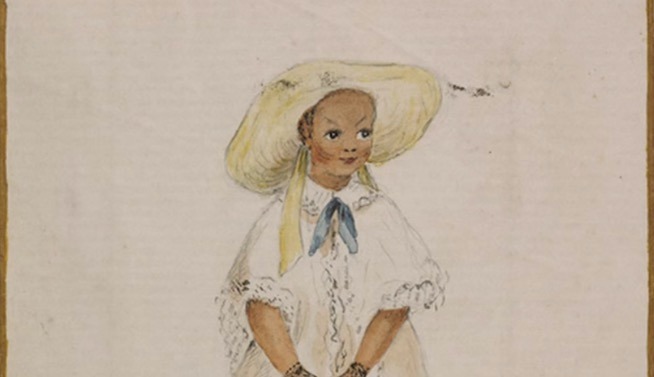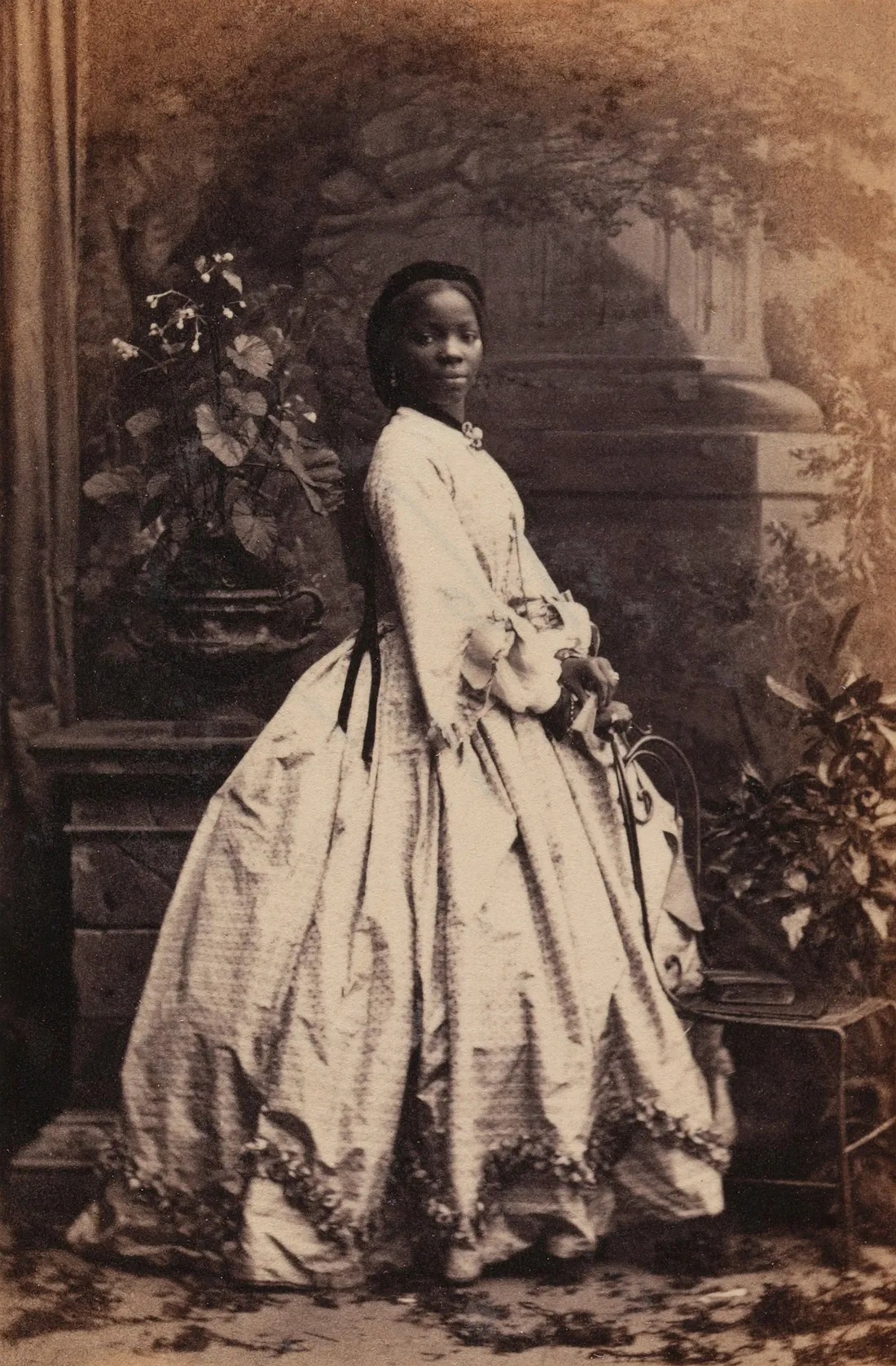The Enslaved African Princess Who Became Queen Victoria’s Goddaughter

Can you imagine an African princess—orphaned, enslaved, stripped of her identity, and taken from her homeland by the age of eight—rising to become Queen Victoria’s goddaughter?
Sarah Forbes Bonetta is the name history remembers, but it wasn’t the one she was born with. At just 4 years old, she was sold into slavery and, in an unexpected twist of fate, became the goddaughter of the most powerful queen in the world.
Seen by many in Victorian society as a “social experiment,” her story is a remarkable journey. Keep scrolling to uncover the extraordinary life of Sarah Forbes Bonetta.
The Captive Who Became a Gift

Sarah Forbes Bonetta, originally named Aina, was born into the royal family of the Egbado clan in what is now southwestern Nigeria.
At the age of seven, her village was raided by King Gezo of Dahomey, a kingdom notorious for its human sacrifices and role in the transatlantic slave trade. Sarah witnessed the slaughter of her family and was taken captive by Gezo’s forces.

In 1850, British naval officer Frederick Forbes arrived in Dahomey to convince King Gezo to abandon the slave trade.
King Gezo refused and offered Sarah as a “gift” to Queen Victoria, calling it a “present from a Black King to a White Queen.”

Captain Forbes, noticing Sarah’s intelligence and noble background, accepted her and gave her the name Sarah Forbes Bonetta, named after his ship, HMS Bonetta. This marked the beginning of Sarah’s incredible journey to England.
Sarah Meets Queen Victoria

Arriving in England, Sarah immediately captured the attention of Queen Victoria. The queen was moved by the young girl’s intelligence and composure, affectionately calling her Sally.
The queen wrote in her journal on November 9, 1850, about their first meeting: “She is 7 years old, sharp & intelligent, & speaks English. She was dressed as any other girl.”
This encounter marked the beginning of a unique relationship between the queen and her new protégée.

Sarah was placed in the care of Captain Forbes’s family, and her remarkable progress astonished those around her.
Forbes himself wrote, “She is a perfect genius; she now speaks English well, and has a great talent for music. […] She is far in advance of any white child of her age, in aptness of learning, and strength of mind and affection.”

Sarah quickly adapted to her new environment and regularly visited Queen Victoria at Windsor Castle. During this first year in England, Sarah became particularly attached to the queen’s second daughter, Princess Alice.
A Life Torn Between Two Worlds

When Sarah was about eight, she developed a nagging cough, and Queen Victoria, worried that the cold English weather was making her worse, decided to send her back to Africa.
In May 1851, Sarah was enrolled in a mission school in Sierra Leone, where it was hoped the warmer climate would help her recover.
Queen Victoria continued to fund her education, but Sarah wasn’t happy there. She missed the life she had known in England and expressed her frustrations in letters to the queen.

Four years later, Victoria arranged for her to return. When Sarah returned to Windsor in December, Queen Victoria noted in her journal: “Saw Sally Forbes, the negro girl whom I have had educated: she is immensely grown and has a lovely figure.”
In England, Sarah Forbes Bonetta became something of a sensation, admired for both her intelligence and how quickly she mastered the English language.
After returning from Africa, she settled into a relatively comfortable life with Reverend James Frederick Schoen and his wife in Gillingham, Kent.

However, against Sarah’s own wishes, she was later sent to live with Miss Welsh in Brighton, a woman handpicked by the queen to guide Sarah’s entrance into British society.
By January 1858, the queen invited Sarah to the wedding of her eldest daughter, Victoria the Princess Royal—a significant mark of royal favor.
Marriage and Return to Africa

As Sarah approached adulthood, Queen Victoria began to take an interest in finding her a suitable marriage partner. At 19, Sarah received a proposal from James Pinson Labulo Davies, a wealthy African businessman.
Although Sarah initially resisted the match, the queen’s approval seemed to seal her fate.

The couple wed in a lavish ceremony in 1862, complete with 16 bridesmaids and 10 horse-drawn carriages. The event attracted considerable attention, with newspapers eagerly reporting on the marriage of the “African Princess.”
Following the wedding, Sarah and James moved to Sierra Leone and later settled in Lagos. Sarah named her first child, a daughter, Victoria, after the Queen.

Queen Victoria, honored by the gesture, became the child’s godmother and gifted her a set of golden items: a cup, salver, knife, fork, and spoon.
All are inscribed with the words, “To Victoria Davies, from her godmother, Victoria, Queen of Great Britain and Ireland, 1863.” Sarah went on to have two more children, Arthur in 1871 and Stella in 1873.
During a visit to England in December 1867, Sarah saw Queen Victoria for the last time at Windsor.
The queen noted in her journal: “Saw Sally, now Mrs. Davies & her dear little child, far blacker than herself, called Victoria & aged 4, a lively intelligent child, with big melancholy eyes.”

In her later years, Sarah battled tuberculosis, the illness that would ultimately take her life at just 37 years old. She died in Madeira in 1880, but her legacy of resilience and grace lived on.
Queen Victoria, still deeply connected to Sarah, ensured that her daughter was well cared for. The queen paid for her education at Cheltenham Ladies’ College and kept in contact with her for many years.
Sarah Forbes Bonetta’s Impact

Sarah Forbes Bonetta’s extraordinary life revealed the intersection of race, class, and empire in Victorian England. She became a symbol of British benevolence while also challenging the widespread beliefs of racial inferiority.
Her life and accomplishments were carefully watched, sparking discussions about whether Africans could be “civilized” in the eyes of Victorian society.
Her story reminds us of the often-overlooked figures who helped shape history. As Gregory Cooke stated, “These women, I truly believe, are some of the most significant women of the 20th century,” and Sarah Forbes Bonetta certainly stands among them.

